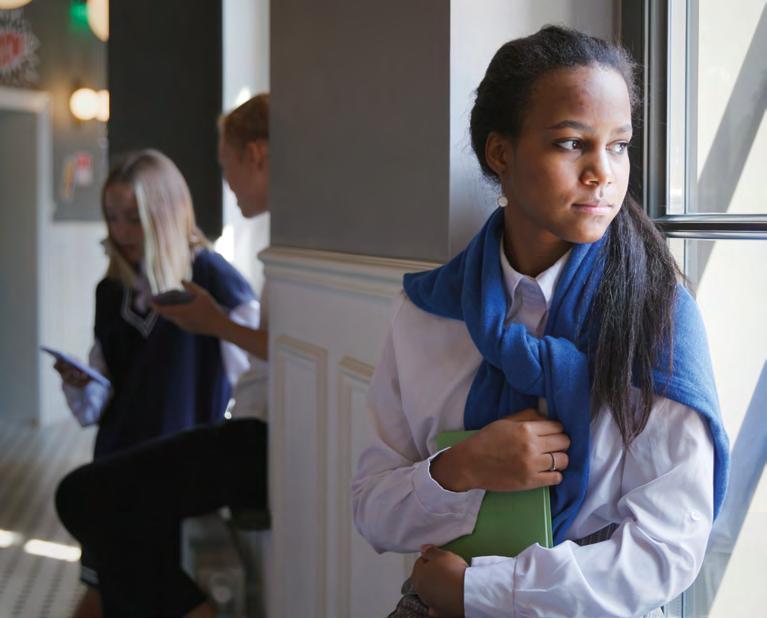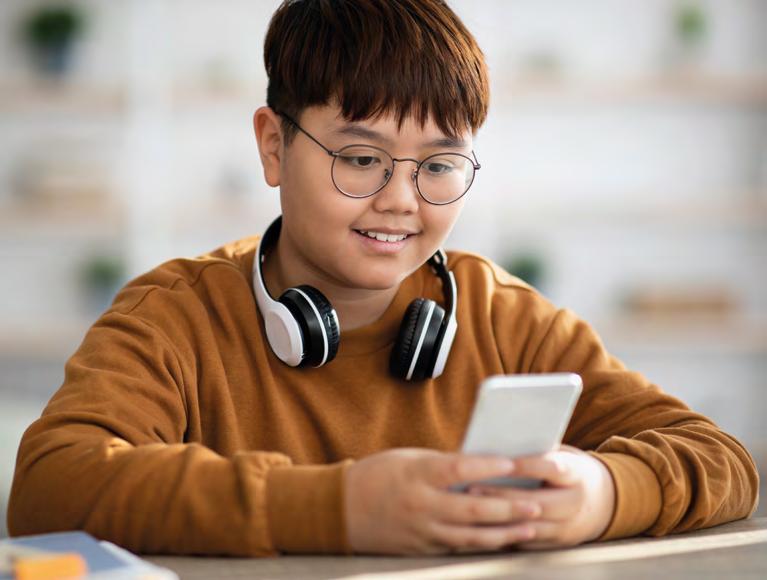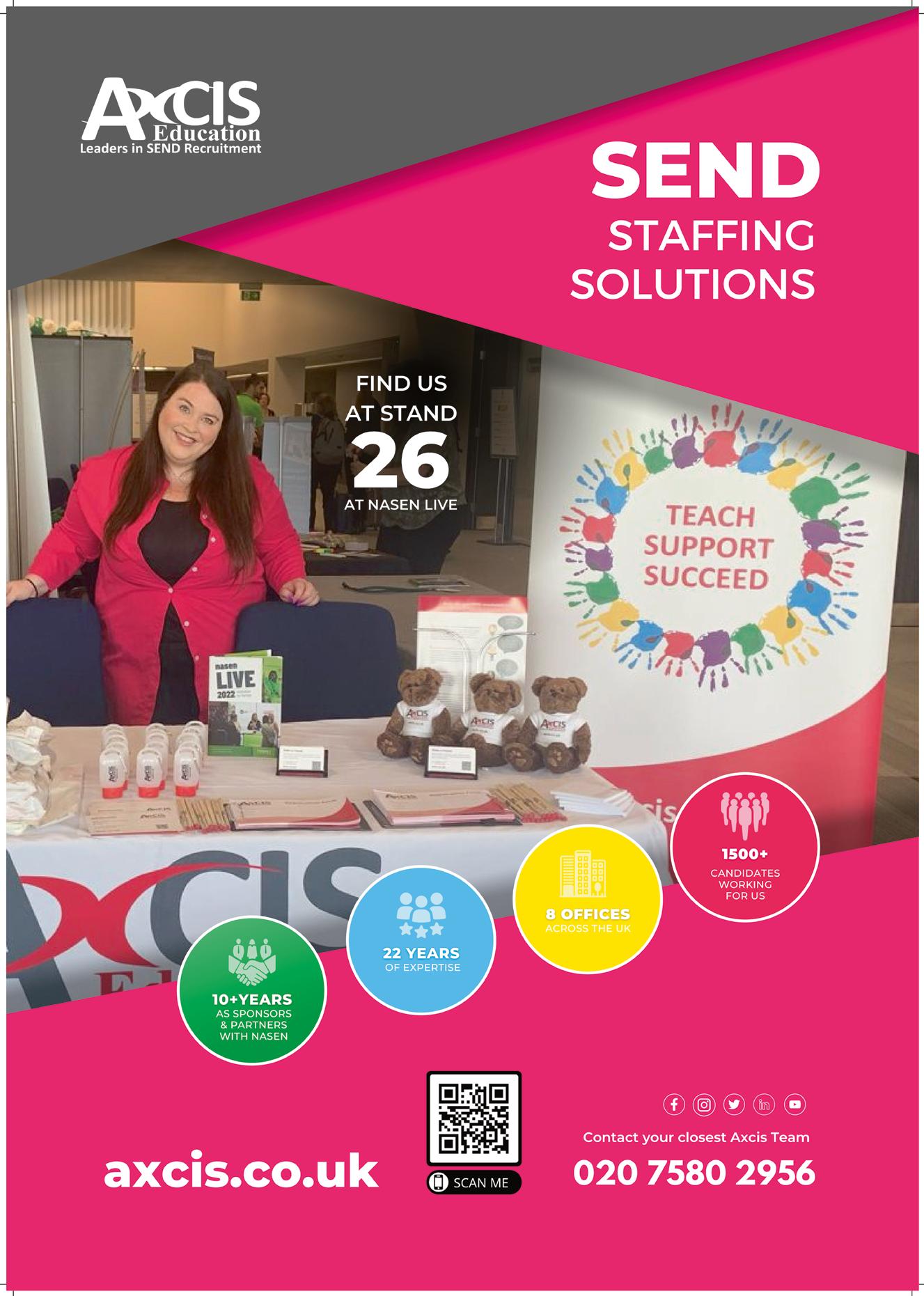
4 minute read
Can tech help teen mental health?
Emma Taylor, children’s clinical lead of Wysa, discusses the potential role that artificial
EMMA TAYLOR
Emma is the children’s clinical lead of Wysa, an AI app for mental wellbeing. She qualified as a mental health nurse in 2012 and has worked in child and adolescent mental health since that time. She has won several awards for her work in nursing and digital innovation. She is an experienced clinical innovator in digital services and the clinical safety officer for Wysa. She is currently leading the first NHS real world study into the use of AI in mental health, funded by NIHR.
It seems that the youth mental health crisis is even more severe than we thought. New research (https://bit.ly/3IuUKR7) reveals that more than eight in ten teenagers are experiencing mental health worries, with one in three needing professional support. But half of young people can’t access the support they need, with many feeling too ashamed or uncomfortable to talk to teachers or mental health teams at school. As a result, a generation of teenagers is silently suffering, with nowhere to turn.
New figures from mental health app Wysa show that the children and young people’s mental health crisis is worse than estimated. Over one in three 13-17 year olds surveyed indicate symptoms of depression or anxiety that warrant investigation.
The figures also show that 82 per cent self-report a range of mental health issues, such as anxiety (49 per cent, rising to 63 per cent of females), trouble sleeping (21 per cent), dislike of image (26 per cent), fear of socialising (29 per cent) and other concerns. Half are worried about their parents’ money, showing the influence of news agenda and the cost-ofliving crisis on teenagers’ mental health.
However, most worrying is that young people aren’t getting the help that they need. More than half (55 per cent) who scored three or more on Generalised Anxiety Disorder Scale – 2 (GAD2) and Patient Health Questionnaire 2
(PHQ2) screening questionnaires for anxiety and depression haven’t spoken to a relevant professional about it.
Stigma And Lack Of Knowledge
Their reason is embarrassment (43 per cent), or that they don’t recognise they need help (41 per cent); stigma still prevails, and education about what is normal needs to happen. We need to normalise talking about mental health and provide the resources and education on what to do when struggling, or when faced with difficulties. Although there has been extra focus and investment into supporting people to understand and identify signs of mental ill health, it’s just not landing with young people.
One in six young people (17 per cent) don’t know who to speak to, which rises to a quarter (23 per cent) of 13-15 year olds. Having a mental health nurse in school, or posters about therapists, only work if people are shown how to access them and guided to the necessary support.
Lack Of Accessibility
Part of the reason for this is accessibility, particularly at the times that young people need help. Nearly half (49 per cent) experience mental health worries before school and a quarter (27 per cent) just before bed, yet most current solutions are available during school hours. A third (35 per cent) say that the support available is not at the right times for them.
Turning To Tiktok
When faced with challenges, half of young people would speak to parents (53 per cent), and a similar number to friends (46 per cent). But ahead of CAMHS services (25 per cent) and teachers (21 per cent), is TikTok (33 per cent). Teenagers are using their phones and social media to access mental health support, which may not be accurate or regulated.

When asked how they would feel about a confidential app with tailored support, and if that app and chatbot would be a preference over other people, the answer was often yes. An app is the preference over teachers, doctors and siblings. An astonishing eight in ten (78 per cent) would choose an app over their teachers, and three fifths (60 per cent) would rather get help from an app than their doctor.
This points to a need for a clinically validated and backed digital solution that meets young people where they are and when they need. The research clearly shows us that support isn’t available in the moment our young people need it. Resources mean that young people who present for clinical support have limited and timebound treatment at specific times of the day; which may not be when they most need help. An always-on, flexible solution, that helps them at the moment of need, is necessary.
Hammersmith, Fulham, Ealing and Hounslow Mind (HFEH) is providing Wysa to 13-18 year-olds attending its state school network whose needs are assessed to be suitable for virtual support. The West London based Local Mind Association offers Wysa as a preventative tool and to encourage more young people who need help to come forward.
As Nana Owusu, clinical lead and director of Children and Young People’s
Services, HFEH Mind explains, “We wanted to give teenagers something to help them with their everyday mental health that is convenient, discreet, and feels familiar. Teens are willing to embrace mobile apps and texting is part of everyday life, so we are meeting them on their level with this kind of interactive digital support. Self-help needs to be interactive, engaging and even enjoyable, to encourage teenagers to build their mental resilience and help prevent the onset or deterioration of any diagnosed mental illness.”
How It Works
Using an emotionally intelligent artificial intelligence (AI) chatbot to understand and react to emotions and worries could be a first step that young people are more willing to undertake. Gaining information on techniques to help cope with challenges could provide much-needed assistance and, when extra support is required, young people can then take guidance from a qualified professional therapist. AI could make it easier for young people to access the vital mental health support they need, when they need it. Young people shouldn’t have to wait until they are very unwell to receive treatment or support. So, whether they need one-to-one therapeutic support, wellbeing resources, immediate and ongoing support and information, or ondemand exercises to help their mental health, digital tools can be with them every step of the way. If we want to raise mentally healthy young people, we need to be giving them the resources they need, when they need them











